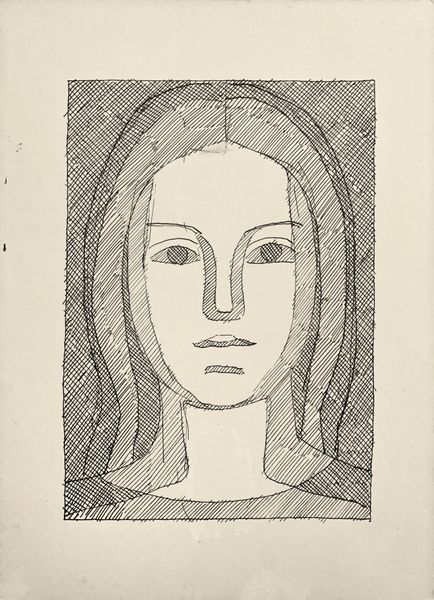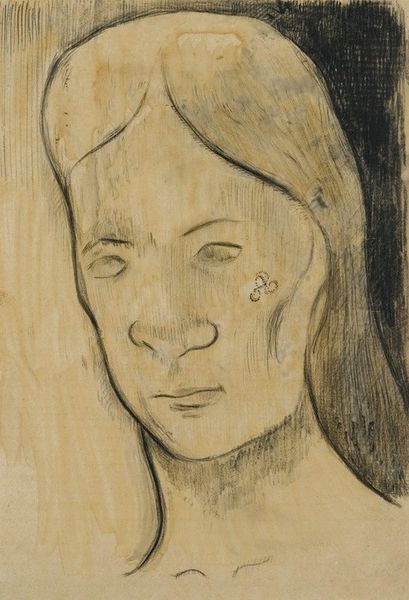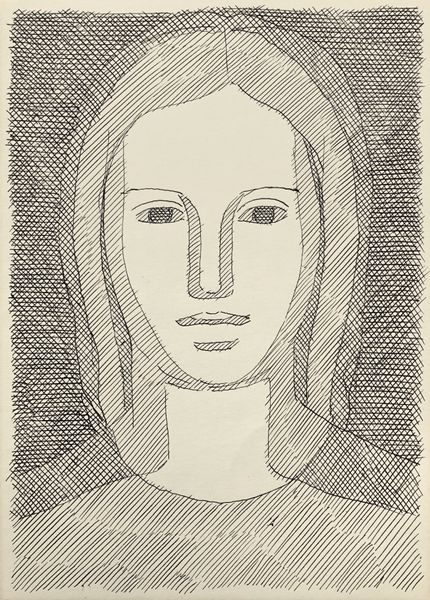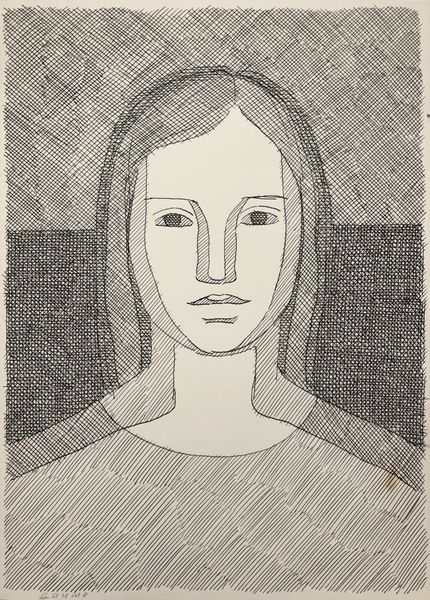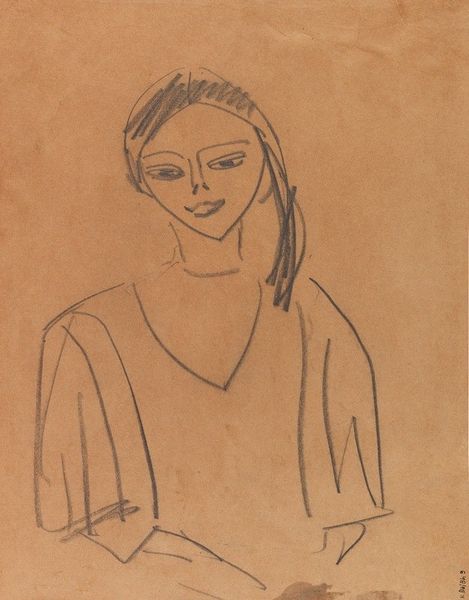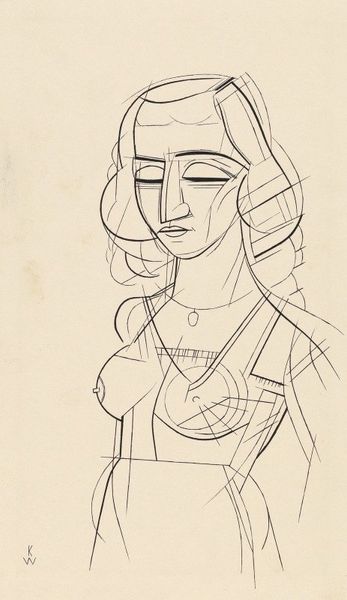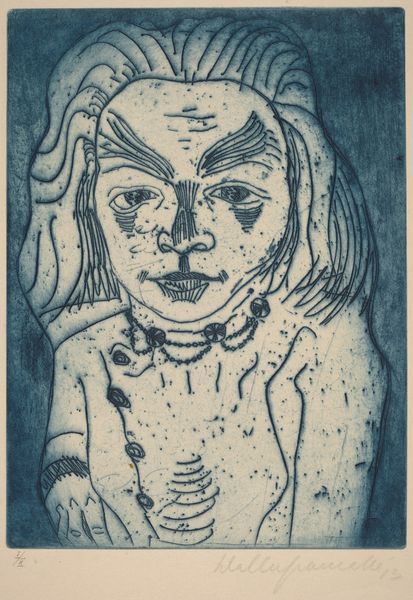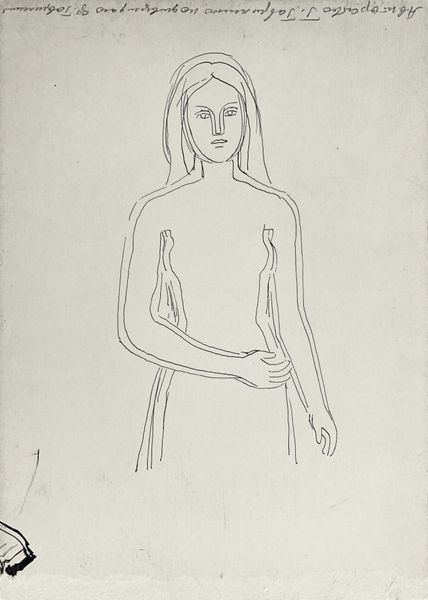
drawing, pencil
#
portrait
#
drawing
#
toned paper
#
facial expression drawing
#
light pencil work
#
head
#
face
#
pencil sketch
#
figuration
#
personal sketchbook
#
pencil drawing
#
sketch
#
pencil
#
line
#
sketchbook drawing
#
nose
#
portrait drawing
#
pencil work
#
post-impressionism
#
sketchbook art
#
forehead
#
female-portraits
Dimensions: 16 x 12 cm
Copyright: Public domain
Editor: This is “Tahitian Woman’s Head,” a pencil drawing by Paul Gauguin from 1892. It's held in a private collection. I’m immediately struck by the almost mask-like quality of her face, even though it's just a sketch. What symbolic meanings might be embedded in this portrait? Curator: That mask-like quality you observe is fascinating. It raises the question: Is this a portrait of an individual, or a representation of something more profound? Consider Gauguin's broader project; his interest in "primitive" cultures. How might this image reflect his projection of Tahitian identity, layered with his own cultural understanding and artistic intentions? Editor: So, it's not necessarily about capturing the woman's likeness, but about something bigger? Is there an established canon for rendering the face and figure here? Curator: Precisely. The downcast eyes, the simplified features – these aren't necessarily about accuracy, but perhaps about conveying a sense of the 'other,' the exotic, within a Western symbolic framework. Think of the romanticism intertwined with colonialism during this era. The symbolic weight that rests upon the sitter seems like a considerable burden; do you think that reading makes sense? Editor: I think so, yes. It definitely reframes how I see the drawing, considering the context in which it was made and how that context affects what the artist depicts – consciously or not. Curator: Indeed. Understanding the cultural baggage that accompanies an image is as essential as understanding the technique. The symbols carry potent meanings. I’m interested in what is absent, and what it speaks to – not what is readily evident. Editor: I’ll definitely look at Gauguin’s work differently now. Thanks for that deeper perspective. Curator: My pleasure. Every image is a product of its time, embedded with codes that unlock larger narratives.
Comments
No comments
Be the first to comment and join the conversation on the ultimate creative platform.
